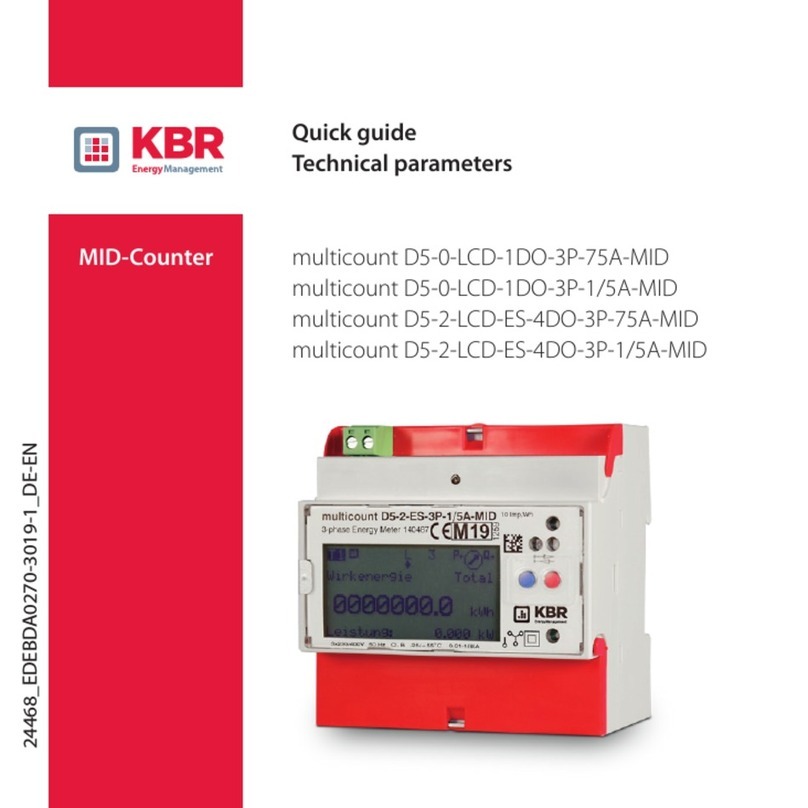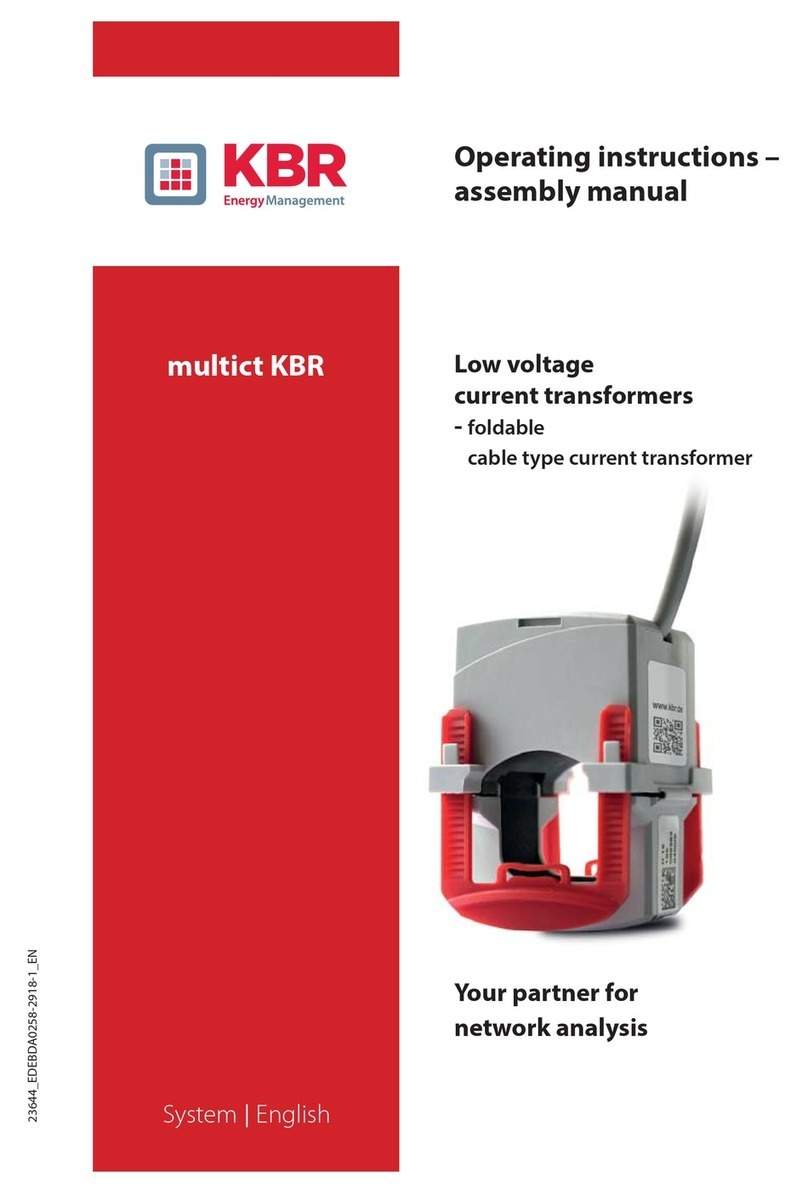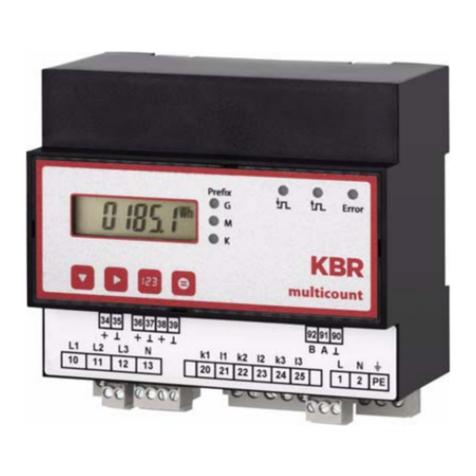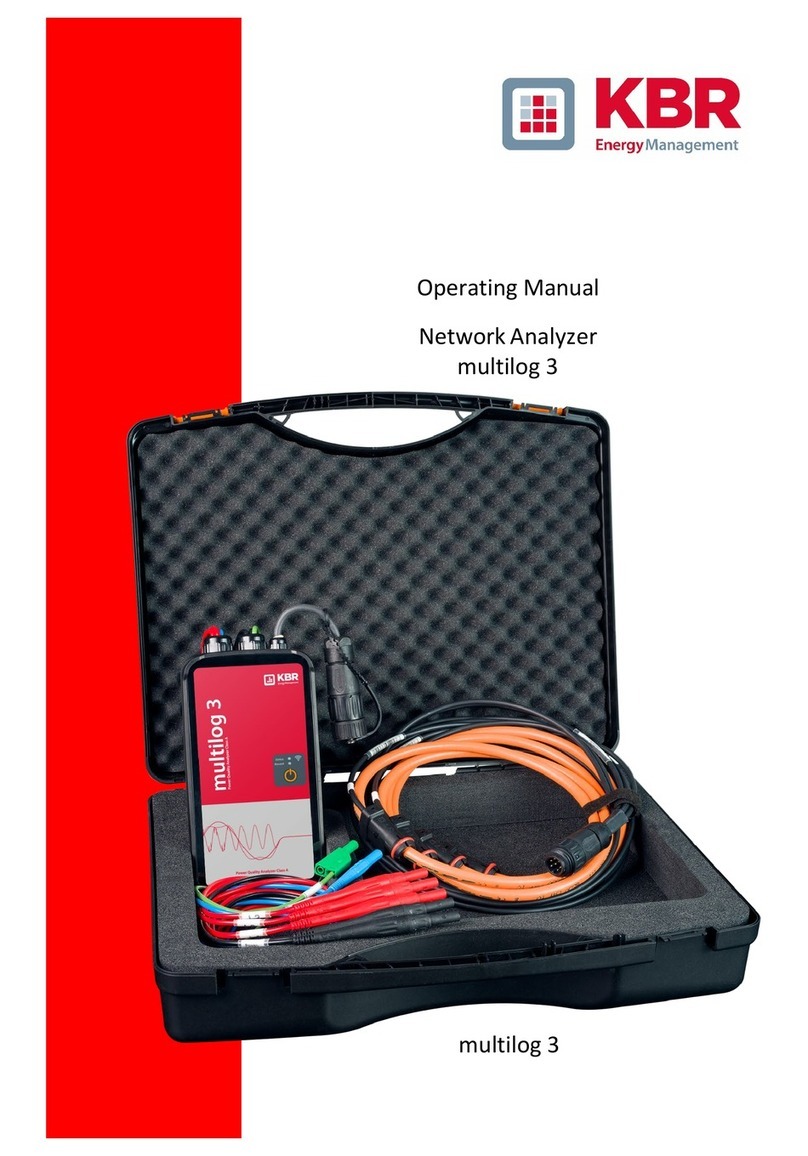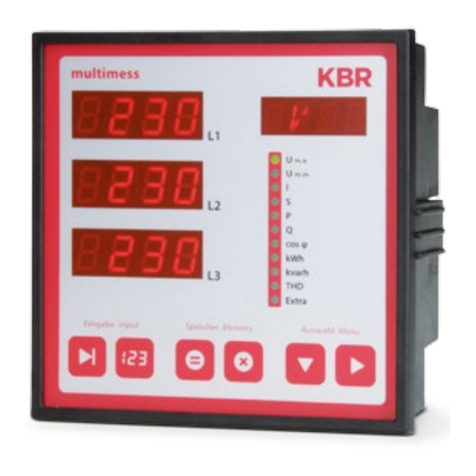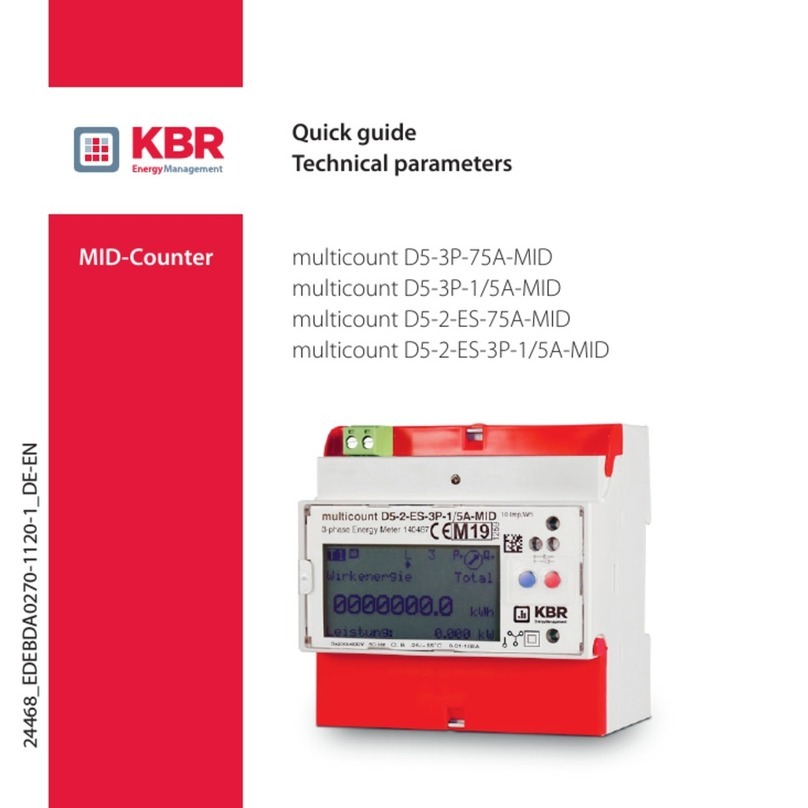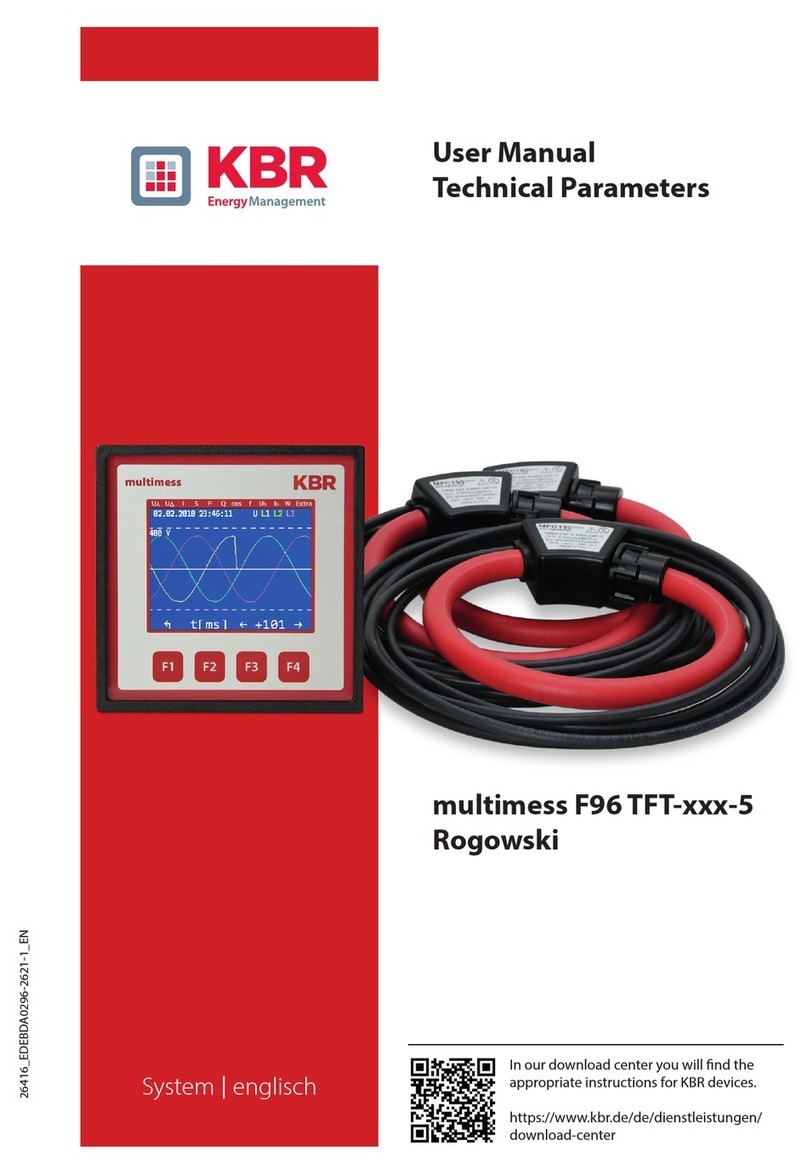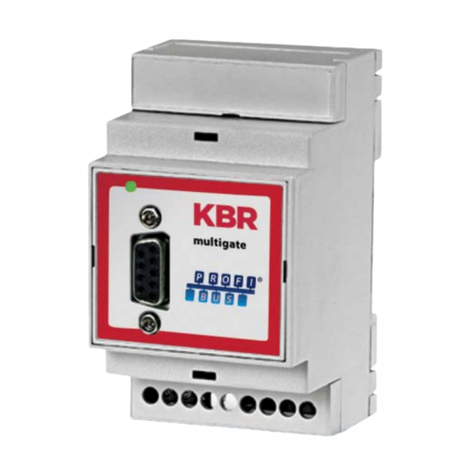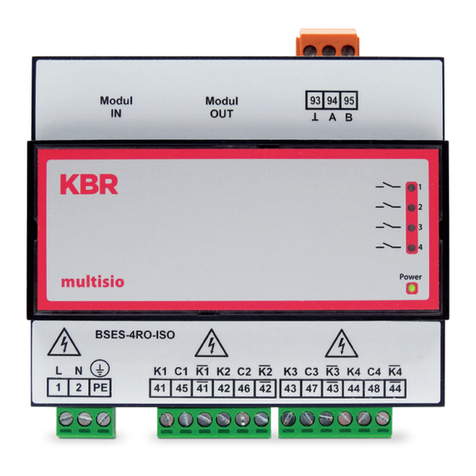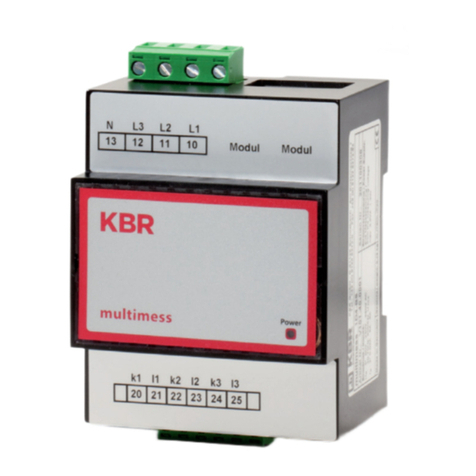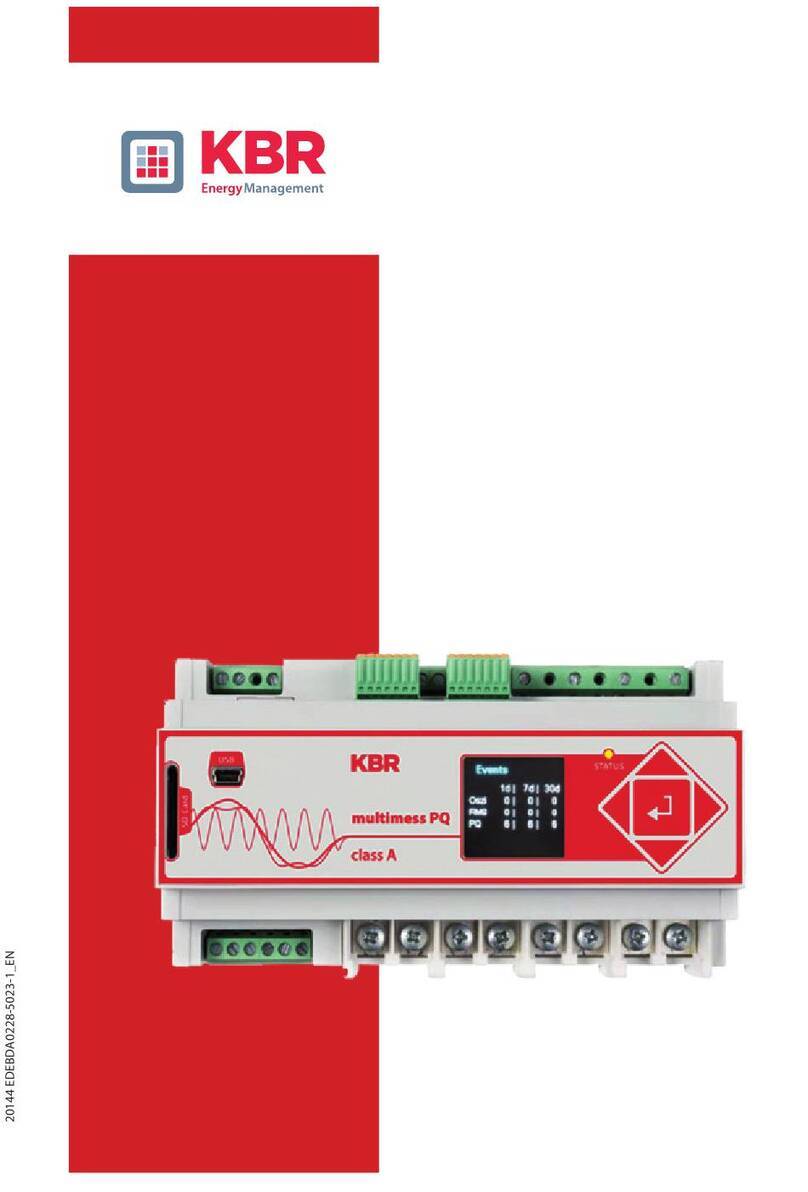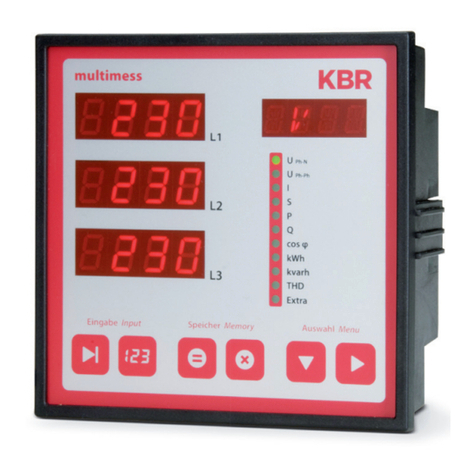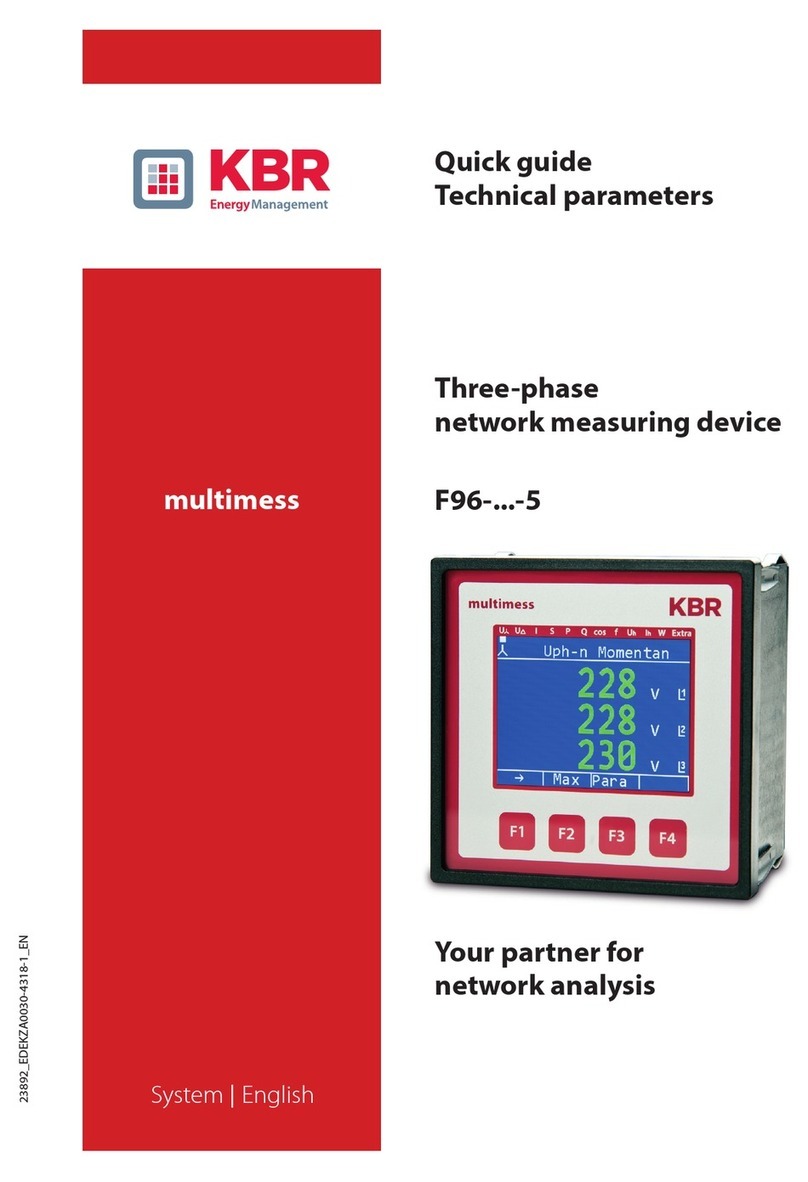
Rev. 3.00 3
22067_EDEBDA0239-3617-3_EN
KBR multimess F144-2-LED-ESMS...-4Table of contents
9.7 Setting the bus protocol................ 56
9.8 Setting the Modbus bus
address and baud rate.................... 57
9.9 Setting the relay on-delay
and o-delay...................................... 58
9.10 Activating daylight saving time
and setting the relay o-delay .... 60
9.11 Language settings ........................... 61
9.12 Password ............................................. 62
9.13 Conguring the pulse output...... 63
9.14 Damping coecient ....................... 65
9.15 Default settings................................. 66
9.16 Zero point creator............................ 67
9.17 Analog outputs................................. 68
10 Reset and delete function ............ 72
10.1 Reset ..................................................... 72
10.2 Delete energy meter....................... 72
10.2.1 Delete energy meter manually ... 72
10.2.2 Delete all energy meters ............... 72
10.3 Deleting extreme values ............... 72
10.3.1 Deleting individual
extreme values.................................. 72
10.3.2 Deleting all extreme values.......... 73
10.4 Deleting limit settings.................... 73
10.4.1 Deleting individual
limit settings ...................................... 73
10.4.2 Deleting all limit settings .............. 73
11 Memory functions ........................... 74
11.1 Device settings.................................. 74
11.2 Basic device parameters................ 74
11.3 Long-term memory......................... 75
11.4 Load prole memory ...................... 75
11.5 Annual energy memory................. 75
11.6 Event memory................................... 76
11.7 Measurement period
synchronization ................................ 76
11.8 Synchronization only by
internal clock ..................................... 76
11.9 Synchronization by the energy
supplier’s synchronous pulse....... 77
11.10 Synchronization by KBR eBus ...... 77
11.11 Synchronization at tari change 78
12 Technical data.................................... 79
12.1 Measuring and display values ..... 79
12.2 Measurement accuracy.................. 80
12.3 Measuring principle ........................ 81
12.4 Device memory................................. 81
12.5 Power supply ..................................... 81
12.6 Hardware inputs and outputs ..... 82
12.6.1 Inputs.................................................... 82
12.6.2 Outputs................................................ 82
12.7 Electrical connection ...................... 83
12.8 Mechanical data ............................... 84
12.9 Ambient conditions, electrical
safety and standards....................... 85
12.10 Default settings after reset ........... 86
13 Serial interface .................................. 87
13.1 RS 485 bus operation...................... 87
14 Overvoltage and lightning
protection ........................................... 87
15 Troubleshooting............................... 88
16 Appendix............................................. 90
16.1 Added functionality: Probus...... 90
16.2 Setting the bus protocol................ 90
